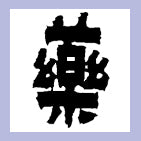TCM ( Traditional Chinese Medicine ) Perspectives on Hair Loss
Hair loss, known as "youfeng" or "fazhu tuofa" in TCM, falls under the categories of "xufabai" (premature graying) and "faluo" (hair loss). TCM theory posits that "hair is the surplus of blood and the splendor of the kidney," with hair growth and vitality closely tied to organ function, qi-blood balance, and meridian circulation. In modern society, accelerated life rhythms and increasing mental stress have led to a trend of younger individuals experiencing hair loss. TCM offers unique advantages in preventing hair loss and promoting regrowth through its holistic, syndrome-differentiation approach.
I. TCM Theoretical Framework for Hair Loss Pathogenesis
-
Kidney-Liver Deficiency as the Root Cause
- The kidney stores essence, governs bone marrow production, and manifests in the hair. The Yellow Emperor's Inner Classic states: "At seven years for females, kidney qi becomes abundant, teeth and hair grow... At eight years for males, kidney qi solidifies, hair grows and teeth mature." Insufficient kidney essence leads to poor hair nourishment, manifesting as dry hair quality and increased shedding.
- The liver stores blood, and hair is the surplus of blood. Liver blood deficiency results in inadequate hair follicle nutrition, commonly seen in postpartum or postoperative individuals or chronic night owls, accompanied by dizziness, blurred vision, and scanty menstrual flow.
-
Qi-Blood Stagnation as the Branch Pathogen
- Impaired qi-blood circulation causes insufficient hair follicle perfusion, often seen in stress-induced hair loss. Clinical manifestations include scalp tenderness, tortuous sublingual veins, and associated chest tightness, hypochondriac pain, insomnia, and polysomnia.
-
Damp-Heat Evaporation as the Pathogenic Factor
- Modern dietary habits rich in fatty/sweet foods impair spleen-stomach transport, generating internal damp-heat that steams upward to the vertex, eroding hair roots. Symptoms include greasy, itchy scalp with foul breath and sticky stools.
-
Meridian Syndrome Differentiation
- The liver meridian "ascends behind the throat, enters the pharynx, connects to the eye system, emerges at the forehead, and meets the Du meridian at the vertex." Liver meridian stagnation-heat often causes temporal hair loss.
- The kidney meridian "penetrates the spine, connects to the kidney, and links the bladder." Kidney deficiency-type hair loss typically starts at the vertex.
II. Syndrome-Based Selection of Proprietary Chinese Medicines
-
Qibao Meiran Wan (Kidney-Liver Deficiency Type)
- Composition: Polygonum multiflorum, Poria cocos, Achyranthes bidentata, Angelica sinensis, Lycium chinense, Cuscuta chinensis, Psoralea corylifolia
- Actions: Nourishes liver and kidney, replenishes essence and blood
- Indications: Hair loss with lumbar knee weakness, loose teeth/premature graying, tinnitus/spermatorrhea. Pale tongue with white coating, deep-thin pulse.
- Modern Research: Contains stilbene glycosides that prolong hair follicle anagen phase and promote dermal papilla cell proliferation.
-
Yangxue Shengfa Jiaonang (Blood Deficiency with Wind Pattern)
- Composition: Rehmannia glutinosa, Angelica sinensis, Notopterygium incisum, Chaenomeles speciosa, Ligusticum chuanxiong, Paeonia lactiflora, Cuscuta chinensis, Gastrodia elata
- Actions: Nourishes blood, expels wind, tonifies kidney and essence
- Indications: Postpartum hair loss, alopecia areata with pale complexion, dizziness, palpitations. Pale tongue with thin coating, thin-weak pulse.
- Pharmacology: Angelica polysaccharides enhance hair follicle stem cell activity; Notopterygium extracts exhibit anti-inflammatory and antipruritic effects.

-
Jingwu Jiaonang (Kidney-Yin Deficiency Type)
- Composition: Polygonatum sibiricum, prepared Polygonum multiflorum, Ligustrum lucidum, Eclipta prostrata
- Actions: Nourishes kidney-yin, replenishes essence and blood, strengthens bones
- Indications: Early-stage seborrheic alopecia with night sweats, steaming bones,盗汗(nocturnal emission). Red tongue with scanty coating, thin-rapid pulse.
- Features: All four herbs enter liver-kidney channels; modern studies confirm 5α-reductase inhibition reducing DHT production.

-
Chuzhi Shengfa Pian (Damp-Heat Accumulation Type)
- Composition: Angelica sinensis, Paeonia suffruticosa, Ligusticum chuanxiong, Dictamnus dasycarpus, Cicada slough, Rehmannia glutinosa, Sophora flavescens, Kochia scoparia, Saposhnikovia divaricata, Polygonum multiflorum, Xanthium sibiricum, Centipede
- Actions: Nourishes yin, nourishes blood, dispels wind, unblocks collaterals, clears damp-heat
- Indications: Greasy, itchy scalp with bitter mouth, sticky stools. Red tongue with yellow-greasy coating, slippery-rapid pulse.
- Precautions: Avoid in loose stools; contraindicated in pregnancy.

-
Tianma Shouwu Pian (Blood Stasis with Wind-Dryness Type)
- Composition: Gastrodia elata, Dahurian angelica, Polygonum multiflorum, Rehmannia glutinosa, Salvia miltiorrhiza, Ligusticum chuanxiong, Angelica sinensis, Tribulus terrestris, Mulberry leaf, Eclipta prostrata, Ligustrum lucidum, Paeonia lactiflora, Polygonatum sibiricum, Glycyrrhiza uralensis
- Actions: Nourishes yin, tonifies kidney, nourishes blood, calms endogenous wind
- Indications: Hair loss with scalp prickling, menstrual clots, purple-dark tongue with petechiae.
- Combination Therapy: May be combined with Xuefu Zhuyu oral liquid for enhanced blood-activating effects.

III. TCM External Therapies
- Plum Blossom Needle Tapping: Light tapping along bladder and du meridians until mild bleeding, twice weekly, to activate hair follicle stem cells.
- Herbal Steaming: Decoct 100g Platycladus orientalis leaves, 30g Sophora flavescens, 50g Vaccaria segetalis for external washing, thrice weekly, suitable for damp-heat type hair loss.
- **Acupoint Injection*: Zusanli (ST36) and Xuehai (SP10) injected with Angelica sinensis solution, 0.5ml per point, every other day.
IV. Modern Research Advances
- Hair Follicle Stem Cell Regulation: Astragalus polysaccharides promote proliferation via Wnt/β-catenin signaling pathway.
- Microenvironment Improvement: Tanshinone reduces perifollicular fibrosis and improves local circulation.
- **Gene Expression Modulation*: Psoralen upregulates VEGF and bFGF expression, prolonging hair anagen phase.
V. Preventive Care Guidelines
- Diet: Equal parts black sesame and walnut powder, 10g daily (kidney-liver deficiency); adzuki bean and coix seed congee (damp-heat type).
- Lifestyle: Sleep before 23:00, avoid excessive chemical treatments, use wooden wide-tooth combs.
- Emotional Regulation: Practice Baduanjin's "Five Labors and Seven Injuries Posture" to regulate liver qi.
TCM treatment emphasizes "treating the root cause," requiring syndrome differentiation based on tongue-pulse findings. For cases exceeding 2 years with complete follicle closure, integrated TCM-Western approaches are recommended. Regular monitoring of liver function is advised for prolonged medication use, with blood tests and liver-kidney function checks every 3 months. Through comprehensive internal-external therapies, significant clinical efficacy can be achieved in restoring healthy hair growth.
